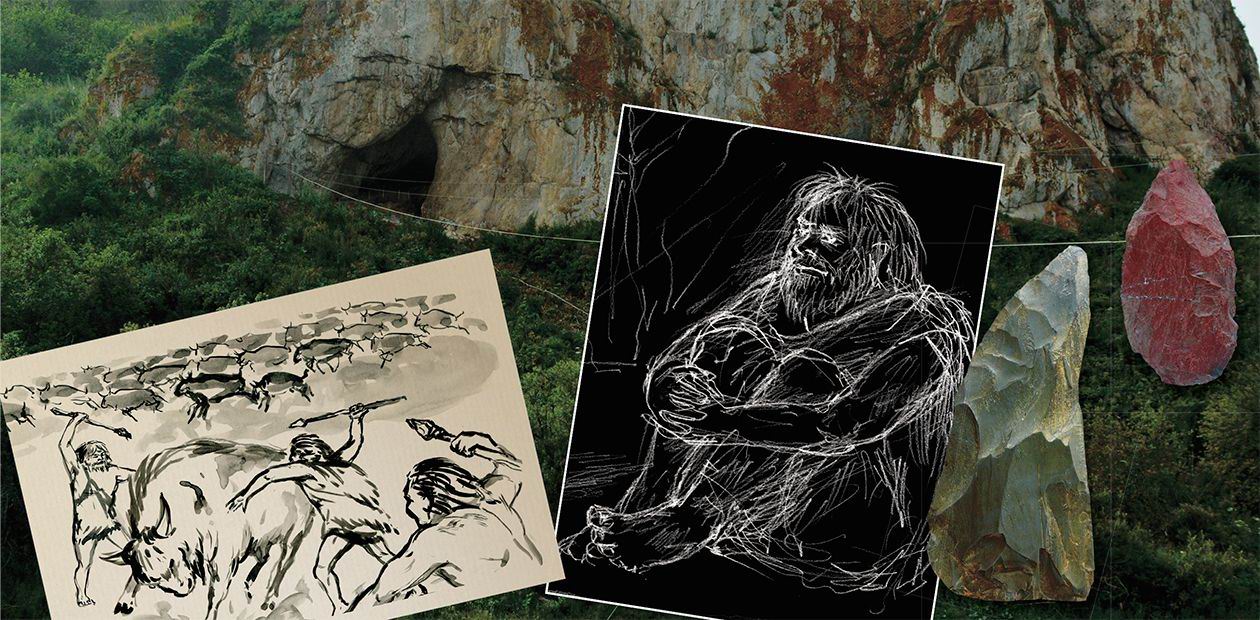Origin of Man: A Fight for Neanderthal Legacy
Many people must have wondered, at least once in their life: What are modern humans? How did they originate? How do they differ from, say, Neanderthals or Pithecanthropi? A bombshell discovery that revolutionized our understanding of the origin of man and overturned the theory of anthropogenesis occurred when archaeologists found fossil anthropological remains in the Altai Mountains, leading paleogeneticists to open a new chapter in the history of modern humans
Until recently, both reputable scientific volumes and school textbooks considered human evolution as a single progressive pathway towards the appearance of the jewel in the crown – the modern man. At the very roots of this genealogical tree, they placed Australopithecines, who were still not humans but apelike fellows who strode confidently towards becoming Homo sapiens.
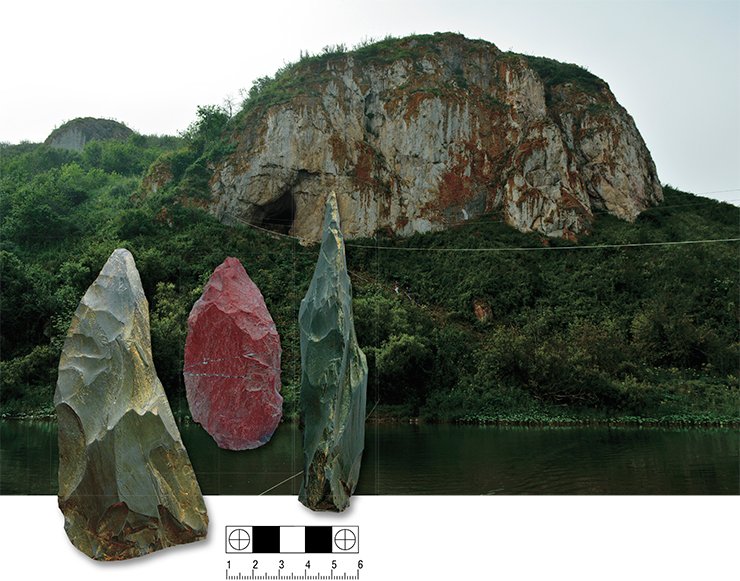
It was accepted that the first “real” human was the African Man of Skill (Homo habilis), a fairly handsome guy by our standards, whose remains were first discovered by the Leakey couple in the Tanzanian gorge of Olduvai in 1960. It is believed that this primitive man was the first to apply tools to change the world, unlike its predecessors, who sought to adapt to the world.
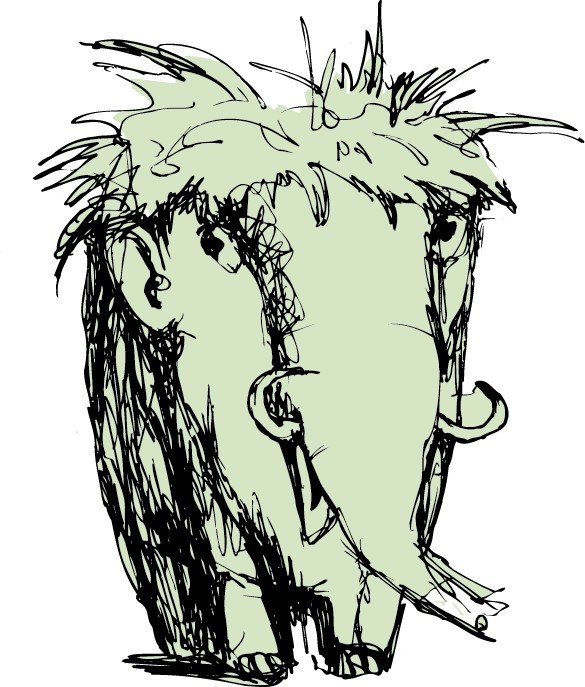 They say that tribes still exist that do not know how to make and use fire. What development stage can they reach? Could man survive without fire?
They say that tribes still exist that do not know how to make and use fire. What development stage can they reach? Could man survive without fire?
 It would not have been possible to survive without fire in Siberia but somewhere in Africa—why not? Until reaching a certain stage in its evolution, man could have existed without fire. We have evidence that humans who were at higher stages of development (Denisovans and Neanderthals) interbred with representatives of a very archaic mankind, e.g., Homo erectus, who could have lived without using fire. And all this happened in the not-too-distant historical past. Probably, by that time these primitive people could have survived in some isolated habitats, on islands, and then either merge into the body of mankind or disappear. But I personally do not think that today there are tribes that do not use fire
It would not have been possible to survive without fire in Siberia but somewhere in Africa—why not? Until reaching a certain stage in its evolution, man could have existed without fire. We have evidence that humans who were at higher stages of development (Denisovans and Neanderthals) interbred with representatives of a very archaic mankind, e.g., Homo erectus, who could have lived without using fire. And all this happened in the not-too-distant historical past. Probably, by that time these primitive people could have survived in some isolated habitats, on islands, and then either merge into the body of mankind or disappear. But I personally do not think that today there are tribes that do not use fire
Then, as this harmonious theory says, the Man of Skill evolved gradually, for various reasons, becoming smarter and handsomer, until it transformed into a Pithecanthropus. Although still an “ape–man,” as follows from the translation of its name, the Pithecanthropus could stand firmly on its feet, literally and figuratively, and was called, therefore, Homo erectus, or the Erect Man. This man hunted for food and was developing in every direction.
It was the erectus who started the victorious march through the lands of the Old World. In Europe, it evolved into the Neanderthal Man (Homo neanderthalensis), popularly known as a cute, though clumsy, guy. Neanderthals did so well in Europe that over time, they developed into the man of the modern type. This landmark event occurred, as believed, about 40,000 years ago. The new player in the evolutionary arena gradually ousted all the others and successfully spread throughout the free lands, reaching the American continent.
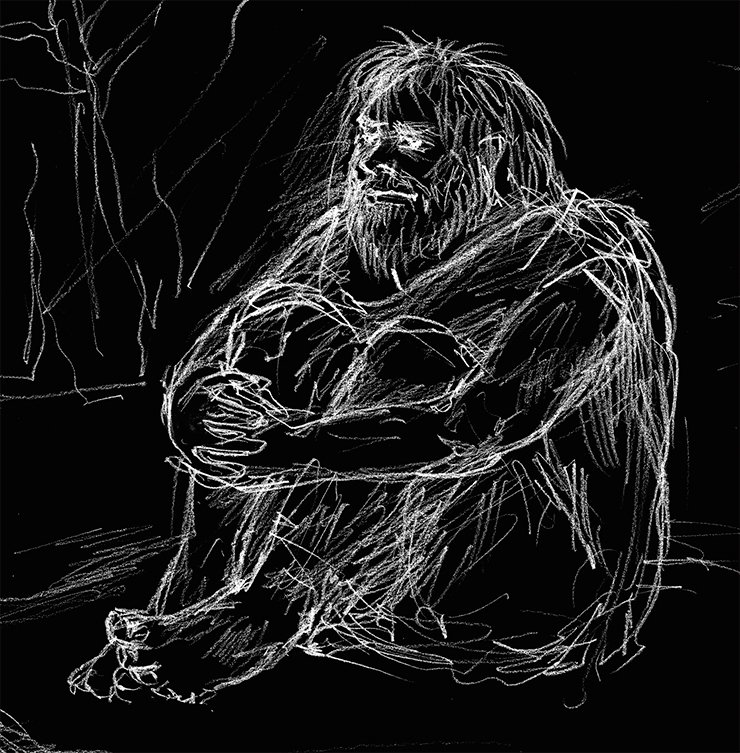
This human development theory existed until the end of the twentieth century; all modern researchers of ancient past grew up on it. But then evidence began to appear that did not fit into this coherent picture. For example, archaeologists found in the Middle East fossilized remains belonging to a modern-type man yet dating back 90,000 years. Where did they come from?
These suspicious primitive people, whose remains began to pop up not only in the Middle East but also in other parts of the world, were called advanced Neanderthals and looked upon as immediate predecessors of modern humans. However, the most critical discovery was made with the advancement of paleogenetics, which brought fossil DNA into the focus of research. It turned out that our human subspecies was formed not 40,000 years ago: this process has been going on for the past 200,000 years and not as simply as one used to think.
From simple to complex
When the straightforward approach to human evolution gave way to a sophisticated, tree-like one, the latter, in turn, branched into several points of view. One of them, less radical, places the origin of man in Africa, but believes that it left this continent very early to settle in different lands, where it subsequently developed independently of others. Those who share this multiregional hypothesis are usually among the most venerable scholars, who rely on the data obtained within traditional disciplines such as paleoanthropology or archaeology.
Recently, another, monocentric theory has become widespread, according to which all people are out of Africa. The black continent not only is the homeland of the oldest population on our planet, all the subsequent waves of migration originated here, including the modern man, who also appeared in Africa and only afterwards spread across the expanses of Eurasia, mixing with the local population who lived there at that time.
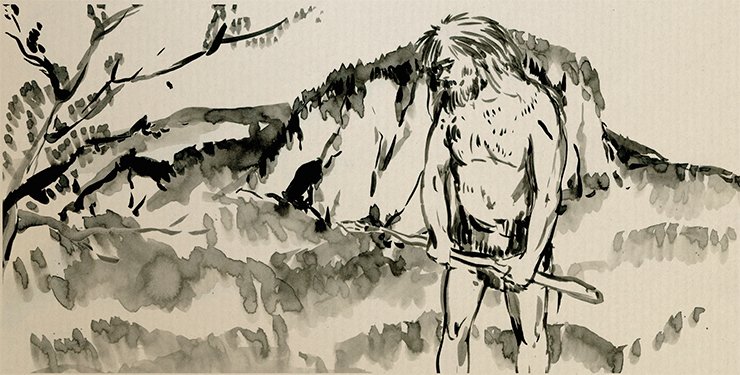
 If we accept our African origin, then all the main genetic waves must have formed in Africa. What caused the migrations?
If we accept our African origin, then all the main genetic waves must have formed in Africa. What caused the migrations?
 Africa is also called a “kettle,” as it provided good conditions for reproduction. And then what? There are such concepts as an ecological niche and a demographic explosion. When a human population lives in one place for a long time, it exhausts the resources of that place, especially if this group does not produce anything, only consumes. Of course, primitive people did not intend to conquer Eurasia, of which they had no idea. They simply went to where they were better off, as is evident from their sites, which mark the path of their migration. All of them are located in places with familiar ecological conditions, relief, etc. The same phenomenon was discovered at the Angara River in the study of local Neolithic monuments. If you dig a river bank there, you will encounter again and again, for kilometers, the sites of early hunters who moved along the river as they exhausted the local resources
Africa is also called a “kettle,” as it provided good conditions for reproduction. And then what? There are such concepts as an ecological niche and a demographic explosion. When a human population lives in one place for a long time, it exhausts the resources of that place, especially if this group does not produce anything, only consumes. Of course, primitive people did not intend to conquer Eurasia, of which they had no idea. They simply went to where they were better off, as is evident from their sites, which mark the path of their migration. All of them are located in places with familiar ecological conditions, relief, etc. The same phenomenon was discovered at the Angara River in the study of local Neolithic monuments. If you dig a river bank there, you will encounter again and again, for kilometers, the sites of early hunters who moved along the river as they exhausted the local resources
Today, the multiregional point of view is supported by archaeological evidence, which shows a gradual, progressive development of the material culture of ancient man almost everywhere in the world. The monocentric theory, however, is supported by the data of natural sciences, primarily paleogenetics. The truth, as always, lies somewhere in between. In any case, all scientists agree that mankind originated in Africa. The African cradle hypothesis is confirmed by both anthropological and archaeological data, including the most ancient stone tools, dating back more than 3 million years.
In modern understanding, about 2 million years ago, man left for the first time its African homeland and reached the expanses of Eurasia. It was indeed the first representative of the genus Homo, the Man of Skill, who made this step; although this man is often named differently, in local way, in different regions. For example, the remains of nine individuals belonging to one of its species, which were found in Dmanisi, Georgia, were called the “Georgian Man.” However, there are arguments to support this view: many scholars believe that the Dmanisi hominins had already made the step from the Man of Skill to a more advanced (in morphological terms) subspecies of Homo ergaster.
Gradually, man moved further and further across the Eurasian continent up to its northern borders. Of course, we are not talking about directed migration or about large crowds; humans were moving in small groups from one habitat to another, e. g., after the herds of animals they hunted.
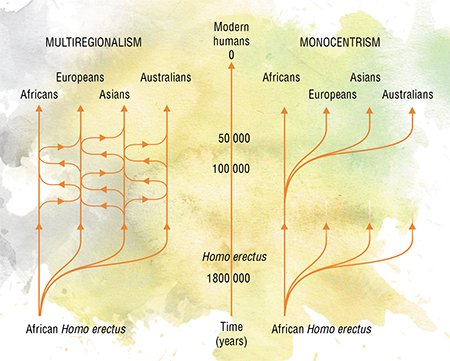 It should be emphasized here that the descendants of the first wave of ancient migration, associated with Homo erectus, reached the Altai Mountains. The earliest evidence of human presence in North Asia was discovered near Denisova Cave: the well-dated primeval Karama site, whose age is no less than 800,000 years! In the 1980s, researchers attempted to use the finds from Yakutia to support the hypothesis of earlier settlement of North Asia, but the Yakutian artifacts, unlike the Altaic ones, still remain controversial. In any case, we are now certain that Siberia participated in the primary settlement of the human population.
It should be emphasized here that the descendants of the first wave of ancient migration, associated with Homo erectus, reached the Altai Mountains. The earliest evidence of human presence in North Asia was discovered near Denisova Cave: the well-dated primeval Karama site, whose age is no less than 800,000 years! In the 1980s, researchers attempted to use the finds from Yakutia to support the hypothesis of earlier settlement of North Asia, but the Yakutian artifacts, unlike the Altaic ones, still remain controversial. In any case, we are now certain that Siberia participated in the primary settlement of the human population.
The next mass migration of humans from Africa took place much later (about 400,000—500,000 years ago) and was associated with developed forms of the Erect Man, better known as the Pithecanthropus. This time, humans reached even more distant regions of Eurasia, including Siberia. It is with this wave that we now associate the boom in the development of stone tool making and animal hunting. These primitive people, who had clothes and dwellings, were well adapted to survive in environments much more severe than in Africa.
Clearly, the division of human “exoduses” into the first and second waves is a formality. In this way, we merely seek to highlight the most significant events.
Discovery of the Third Man
As mentioned above, the first evidence of human settlements in the Altai Mountains dates back roughly 800,000 years. Then comes a large gap: apparently, in the period 600,000—300,000 years ago, no humans lived in the Altai and, generally, in West Siberia, most likely due to the not particularly benign climate. The human population that lived at that time in these latitudes must have been small and could have disappeared through the action of biological laws.
The next known “outpost” of man in the Altai is Denisova Cave. The lowest ancient layers of deposits at this site date back about 300,000 years, i. e., are attributed to the second global wave of human migration. Since that time man has been settling, actively and successfully, across the entire territory of the Altai.
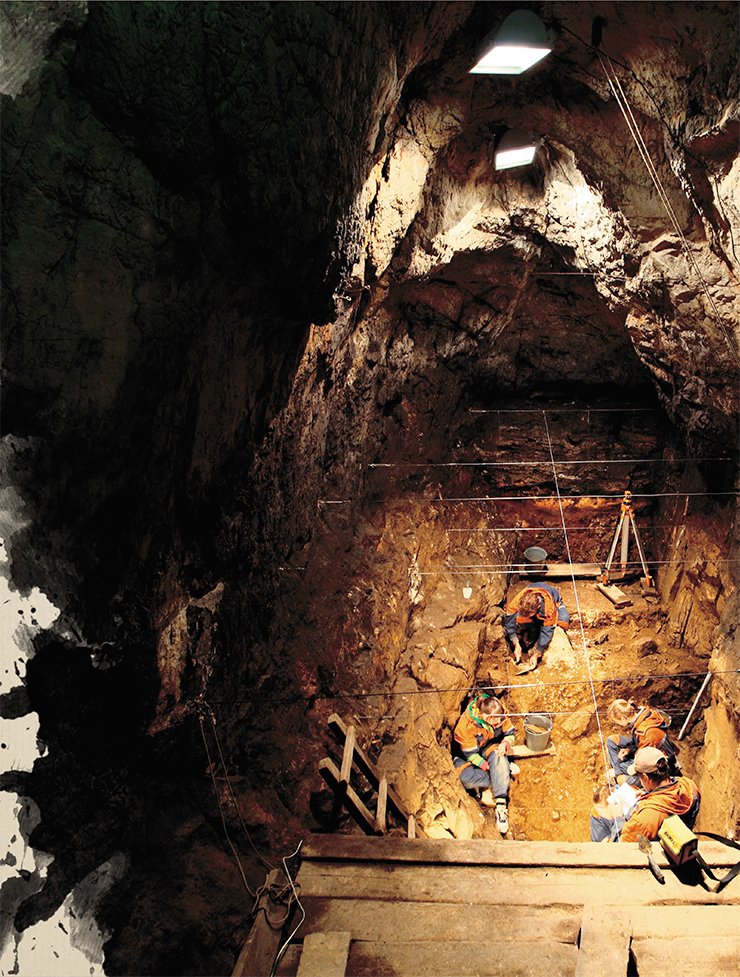
It was Denisova Cave that hosted the truly fantastic discovery of a new subspecies of man, which was called the Denisovan, or the Altai Man (Homo altaiensis). The cave is being studied thoroughly and systematically: over the years, researchers have found in the cave deposits numerous fossil bones of animals yet very few, isolated anthropological remains. Among these, there was a small bone, the distal phalanx of a child’s little finger, found in 2008 in the eastern gallery of the cave in a more than 40,000 years old layer; i. e., the bone belongs to the time of the supposed transition from the Neanderthal to the Modern Man.
In 2009, this find was sent for a detailed analysis to the paleogenetics laboratory of Prof. Dr. Svante Pääbo from the Max Planck Institute for Evolutionary Anthropology (Leipzig, Germany). Siberian archaeologists had cooperated previously with Pääbo’s team: the German researchers analyzed the mitochondrial DNA from the remains found in Okladnikova Cave in the Altai Mountains, South Siberia and proved that they belonged to a Neanderthal man.
 Do the finds from Denisova Cave give any clue about how Denisovans and Neanderthals got along? Did they feud with each other, or was it peaceful coexistence?
Do the finds from Denisova Cave give any clue about how Denisovans and Neanderthals got along? Did they feud with each other, or was it peaceful coexistence?
 Judging by the tools that Denisovans made, we can argue that there is likely no evidence of the presence of the Neanderthal material culture in Denisova Cave. But then the question arises: Where did their bones come from? Perhaps, Denisovans ate Neanderthals (which we cannot rule out) or entered into marital relations with them. As for conflict situations, we used to have a beautiful theory that said that modern-type humans, who had had a developed culture, came to Europe, which was inhabited by Neanderthals, and ousted the local population. The latest Neanderthals were discovered on the periphery of Europe, i. e., in the Mediterranean, in Portugal, where they finally died out. It is now difficult to say whether the alien migrants ousted the Neanderthals through armed conflict or war. However, the hunting tools that modern-type humans possessed made it possible for them to kill other humans
Judging by the tools that Denisovans made, we can argue that there is likely no evidence of the presence of the Neanderthal material culture in Denisova Cave. But then the question arises: Where did their bones come from? Perhaps, Denisovans ate Neanderthals (which we cannot rule out) or entered into marital relations with them. As for conflict situations, we used to have a beautiful theory that said that modern-type humans, who had had a developed culture, came to Europe, which was inhabited by Neanderthals, and ousted the local population. The latest Neanderthals were discovered on the periphery of Europe, i. e., in the Mediterranean, in Portugal, where they finally died out. It is now difficult to say whether the alien migrants ousted the Neanderthals through armed conflict or war. However, the hunting tools that modern-type humans possessed made it possible for them to kill other humans
As for the finger phalanx from Denisova Cave, archaeologists had been certain that the bone belonged to a man of the modern physical type, rather than to a Neanderthal. They even put it on the label on the plastic bag in which they sent the bone to the paleogeneticists. Curiously, the 2017 exhibition dedicated to the Third Man and Denisova Cave demonstrated, in addition to the phalanx itself, the above mentioned historical plastic bag with the erroneous inscription on the label.
The first surprising result obtained by studying the DNA from the phalanx was its excellent preservation. Denisova Cave and the entire region is a well of information for paleogenetic studies, because of the unique climate in the Altai Mountains and, specifically, in the cave. The special temperature regime allows very good preservation of organic material in the local caves. Archaeologists even joke that a real Denisovan mummy may lie there somewhere.
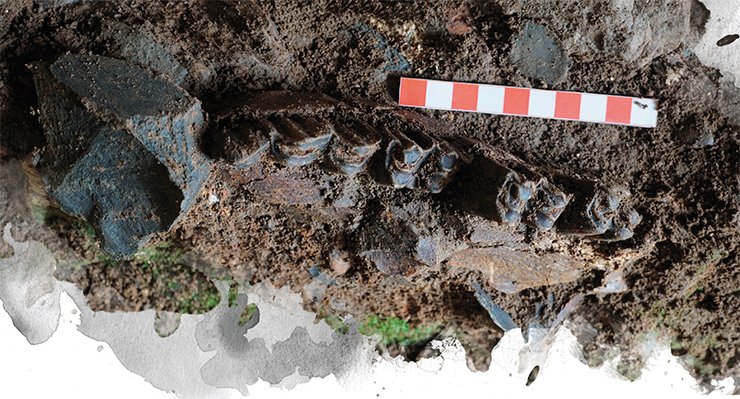
The main conclusion from the study of the DNA of the tiny bone found in Denisova Cave was that it belonged to a new subspecies of man nobody had known about. It came as a shock: How come that in the 21st century, with our centuries-long experience of archaeological and anthropological research, we suddenly bumped into a perfect stranger on the evolutionary arena?!
The legendary find was not the only one of its kind. Although no burials of the Denisovan Man were discovered in the cave, researchers still managed to find something: a few teeth and a cranium fragment. Incidentally, the most common anthropological material in the Altai is finger bones – no one knows why. Maybe they were frozen and removed, or it was associated with some rituals… In any case, we are gradually beginning to imagine what our hero really looked like. It might be still a fantasy, as no skull of the Third Man has been found yet, but here we get support from paleogeneticists, who can tell us something, for instance, about the color of the Denisovans’ eyes and hair…
Of the same blood
Studies of DNA samples from the bone remains found in Denisova Cave showed that the Denisovans were not some small population. Judging by their genetic diversity, they were even greater in number than the Altai Neanderthals: apparently, it was the Denisovans who formed the main population of North Asia in the Stone Age.
The genes of the Denisovans, like those of the Neanderthals, are now found in many modern human populations. Interestingly, the most abundant genetic heritage of the Altai Man was found in Melanesia: the population of Papua New Guinea and the aborigines of Australia inherited up to % of their DNA from the Denisovans. Why it happened remains a mystery since the vast expanses of China lie between the Altai and Oceania and the attempts to extract DNA from the bone remains discovered there have failed so far because of its poor preservation. Therefore, it is not yet possible to answer the question of how Denisovan genes got so far from the Altai Mountains.
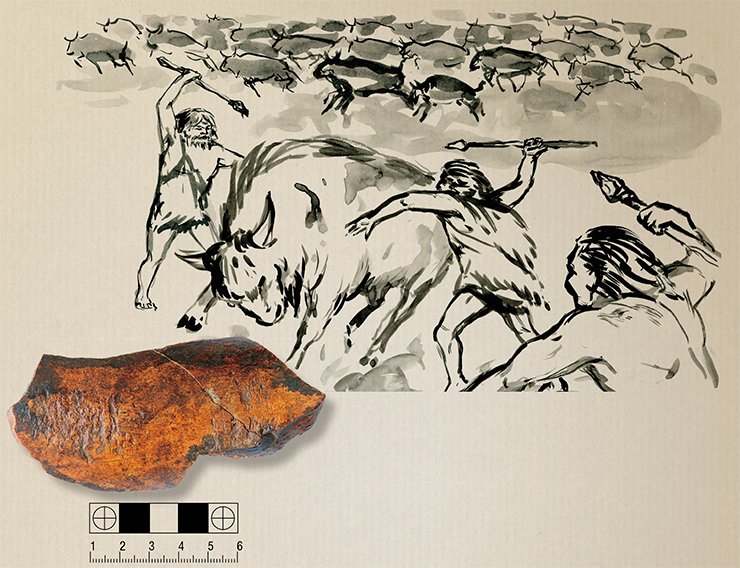
However, the main outcome from studying the DNA of the Denisovans is the understanding that all primitive people that existed throughout the history of mankind, including Pithecanthropi and Neanderthals, were subspecies of Homo sapiens rather than independent species. This is a very important point since different species cannot produce fertile offspring. Judging by the presence of the Denisovan and Neanderthal legacy in our genome, these representatives of primitive mankind were able to interbreed, producing fertile offspring.
This argument is further supported by other amazing finds from Denisova Cave. For example, in the same layer that contained the phalanx of a Denisovan girl, researchers found a fossil phalanx of a toe, which was preliminarily classified as remains of a Denisovan. However, paleogenetic analysis showed that it belonged to a Neanderthal! Moreover, since this DNA was so well preserved, researchers were able, for the first time in the world, to restore the full Neanderthal genome.
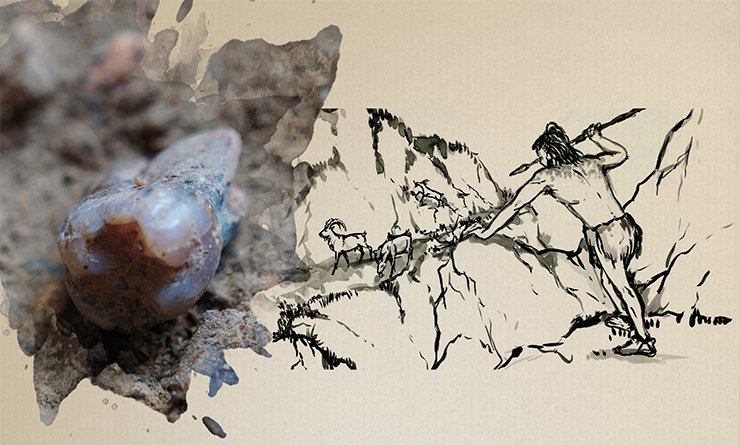
 When did anatomically modern humans first appear in Siberia?
When did anatomically modern humans first appear in Siberia?
 Today, we understand the culture of the Siberian Neanderthals and Denisovans relatively well but have little information on modern humans in the Altai. The earliest such find in North Asia was the tibia from Ust’-Ishim (Omsk oblast), which dates back 45,000 years. An interesting fact: the DNA analysis of this find revealed a relatively recent cross-breeding with Neanderthals, but showed no presence of Denisovan genes. Perhaps, the cross-breeding with Neanderthals occurred early in the process of resettlement of the original human population, most likely, in the Middle East. However, this is a random find, unaccompanied by any artifacts; therefore, the time when modern humans first appeared in Siberia, as well as their interactions with Denisovans and Neanderthals, remains a mystery
Today, we understand the culture of the Siberian Neanderthals and Denisovans relatively well but have little information on modern humans in the Altai. The earliest such find in North Asia was the tibia from Ust’-Ishim (Omsk oblast), which dates back 45,000 years. An interesting fact: the DNA analysis of this find revealed a relatively recent cross-breeding with Neanderthals, but showed no presence of Denisovan genes. Perhaps, the cross-breeding with Neanderthals occurred early in the process of resettlement of the original human population, most likely, in the Middle East. However, this is a random find, unaccompanied by any artifacts; therefore, the time when modern humans first appeared in Siberia, as well as their interactions with Denisovans and Neanderthals, remains a mystery
The joint efforts of archaeologists, anthropologists and paleogeneists presented us with evidence of several episodes of interbreeding between Denisovans and Neanderthals and between Neanderthals and anatomically modern humans. In addition, the study of the paleogenetic material from Denisova Cave suggests subsequent (on the scale of the Stone Age, of course) interbreeding with an even more archaic population. Presumably, those were the descendants of Homo erectus who survived in the nooks of Eurasia.
In addition to this fascinating, enigmatic story with interbreeding, researchers are now vigorously investigating the history of how Neanderthals appeared on the expanses of Siberia. Recent discoveries in Chagyrskaya Cave, the data from repeated analyses of anthropological and archaeological materials from Okladnikova Cave, and the results obtained by analyzing the Neanderthal DNA from Denisova Cave show that different Neanderthals used to live in the Altai and they came there more than once from different parts of the Old World.
 Probably, if we now carried out excavations in those places where the earliest archaeological finds were discovered, they might give much more information. For example, if Dubois had found that phalanx of a Denisovan child, it would have been useless. Perhaps, it makes sense to leave something for the future, until better times?
Probably, if we now carried out excavations in those places where the earliest archaeological finds were discovered, they might give much more information. For example, if Dubois had found that phalanx of a Denisovan child, it would have been useless. Perhaps, it makes sense to leave something for the future, until better times?
 Chinese wisdom says: “If you wait by the river long enough, the bodies of your enemies will float by.” Perhaps, great discoveries can be made through waiting. It’s true: we need to move forward, but we need to leave something too. For example, there once was a technique for studying small caves, when they were literally excavated to the full. The advantage of this method was that the resulting finds could serve to make interpretations of where and how people ate, slept, made fires, etc. In this way, we can obtain a good comprehensive picture of a large site. But what if we dig everything out today, and in a decade, we invent a miracle device capable of recreating a holographic image of what was once happening in the cave... It is important to maintain a balance, as is written in the field archeology textbook, and leave a spot for future control excavations. Therefore, it is necessary to excavate, but it is also necessary to leave something
Chinese wisdom says: “If you wait by the river long enough, the bodies of your enemies will float by.” Perhaps, great discoveries can be made through waiting. It’s true: we need to move forward, but we need to leave something too. For example, there once was a technique for studying small caves, when they were literally excavated to the full. The advantage of this method was that the resulting finds could serve to make interpretations of where and how people ate, slept, made fires, etc. In this way, we can obtain a good comprehensive picture of a large site. But what if we dig everything out today, and in a decade, we invent a miracle device capable of recreating a holographic image of what was once happening in the cave... It is important to maintain a balance, as is written in the field archeology textbook, and leave a spot for future control excavations. Therefore, it is necessary to excavate, but it is also necessary to leave something
What attracted these ancient people to Siberia? How did they get on with the human populations that had come here earlier? Why have no remains of early humans of the modern type been found in the Altai? Is it possible that the ancient objects of Paleolithic art (pendants, beads, etc.) found in Denisova Cave were made by Denisovans? If we can prove the latter, this sensational finding may have a greater resonance than the discovery of the Denisovan Man itself.
The more new data we acquire, the better our understanding of our past and, on the other hand, the more mysteries arise…
The latest anthropological findings, primarily, the discovery of the Denisovan Man in the Altai, suggest that the evolution of the modern man occurred neither in a linear nor even a tree-like pattern. Our family tree looks more like a dense bush whose branches intertwine over and over again.
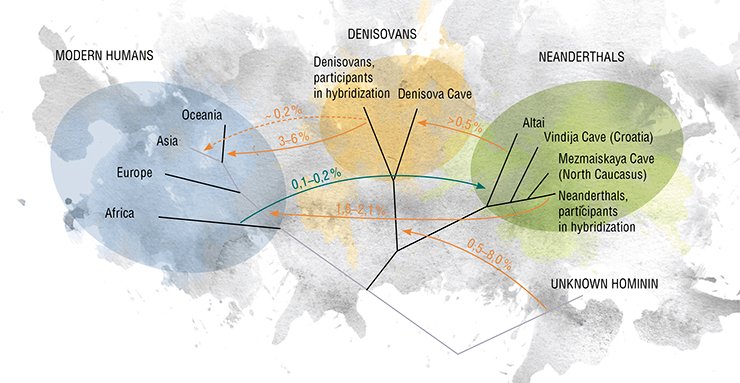
Today, the evolution of man is commonly represented, in a visually compelling way, as braided streams – as a river with the main channel, from which other streams branch. Some of them may get lost, or break through unexpectedly and merge into another stream. Today, we know a lot about some human streams, but paleogenetic data tell us that there may have been other streams, as yet unnamed, which may have also contributed to the ocean of modern mankind.
Reference
Pääbo S. Neanderthal Man: In Search of Lost Genomes. Basic Books, 2014.
Sokolov A. Mify ob evolyutsii cheloveka (Myths about the Evolution of Man). Moscow: Alpina Non-Fikshn, 2015 [in Russian].
Gittelman R. M., Schraiber J. G., Vernot B. et al. Archaic hominin admixture facilitated adaptation to Out-of-Africa environments // Curr Biol. 2016. V. 24. P. 3375–3382.
Schlebusch C. M., Malmström H., Günther T. et al. Southern African ancient genomes estimate modern human divergence to 350,000 to 260,000 years ago // Science. 2017. V. 358. № 6363. P. 652–655.
Simonti C. N. Vernot B., Bastarache L. et al. The phenotypic legacy of admixture between modern humans and Neandertals // Science. 2016. V. 351. N. 6274. P. 737–741.
Timmermann A., Friedrich T. Late Pleistocene climate drivers of early human migration // Nature. V. 538. N. 7623. P. 92–95.


